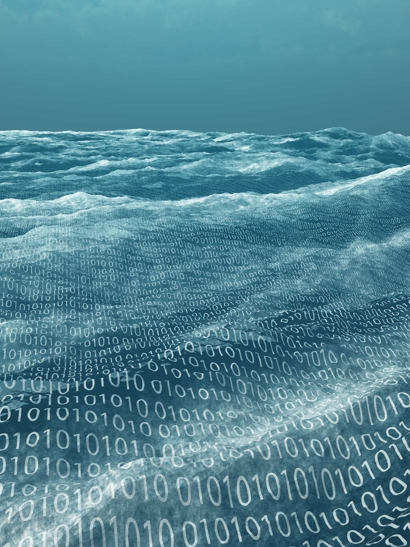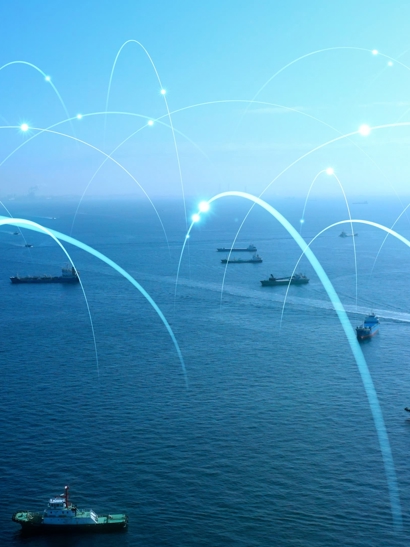The accelerating digitalisation of the maritime sector is increasing awareness among shipping companies and other stakeholders that there is value to be found in the data created during vessel operations, but a gap remains between this realisation and development of the capabilities to do something about it.
One of the fundamental issues to solve in making data available for analysis is establishing ‘ownership’ of that data in the first instance. For shipping companies to maximise the value of their data and ensure that they have the widest possible access to digital services within a competitive market it is necessary that unreasonable and disproportionate limitations are not placed on their ability to access the data produced by their shipboard systems.
While, from a legal standpoint, it can be argued that data cannot be ‘owned’ as a type of property, for the sake of this discussion we will use ‘ownership’ as a shorthand to describe a series of rights to control digital information, including the right to access, copy, modify, process and store the data, and to assign these same privileges to others.
In many situations, where a shipboard system is designed specifically to deliver data to the user as its basic function, questions of data ownership may never arise. For instance, if you purchase a vessel GPS, it will be expected to output GPS data in a standard NMEA format, which can easily be shared with other digital bridge systems. The data is available to be used however the system owner sees fit, and their ownership rights are intact.

Access is key
On the face of it, it might similarly be expected that data ownership should always be directly linked to the ownership of the equipment or system that generates the data, as in the GPS example. However, the lines begin to blur when we look at vessel equipment that is not explicitly designed to provide data to the user as a primary function.
This could include items like a ship’s engine or an automation system, or any number of other vessel installations. It’s easy to claim that the data created by that equipment during its normal operation should belong to the owner of that engine or automation system by default, but in practice this situation can prove far more complex.
For example, ownership of data trapped inside a closed system is of little value if access into the system is controlled solely by the original manufacturer, who can then name their price to allow you to get your hands on what you already ‘own’. Similarly, if that data is initially created in a proprietary format that only the manufacturer can decipher, it is of no value to the shipping company that purchased the equipment to ‘own’ a package of unintelligible digital signals.
In response to these and other potential data ownership issues, the Smart Maritime Council, a cross-industry membership group focused on technology harmonisation, standardisation and interoperability, has released a set of best practice guidelines that includes a recommended list of data-related topics to consider when purchasing shipboard systems.
Begin with best practice
Shipping companies are encouraged to discuss these issues with their suppliers when entering into a contractual relationship so as to ensure that data ownership and access rights are agreed at the beginning of the process, and that any subsequent usage of the data that is created by shipboard equipment is based on the principle of informed consent between both parties.
The Smart Maritime Council’s best practice recommendations establish three main pillars of maritime data ownership and access. To briefly summarise, these pillars state that: the data produced by shipboard equipment belongs to the equipment owner and that ownership conveys certain rights; equipment manufacturers should not place unreasonable limitations on access to that data; and manufacturers should, where necessary, provide access to the codebooks that define digital signals to allow for data processing.
Additional recommendations relating to issues such as the storage of historical data, transfer of ownership, and liability in case of vessel incidents involving shipboard equipment, which derive from or are relevant to the practical application of these three pillars, are also included in the list.
In particular, the inclusion of data as its own asset class in sale and purchase agreements for vessels (or in the transfer of vessel management from one shipmanager to another) was identified as an area lacking any established industry best practices. As such, it is important that parties to such agreements make explicit provision for the transfer of required historical data sets within their contracts, as the transfer of those datasets cannot be presumed to be linked to the transfer of the vessel itself.
It's your data
Similarly, parties relevant to the storage of the datasets in question should be identified within contract discussions – is the data stored with a cloud hosting service, or within servers owned by a software provider? All of these issues can have a significant impact on a new owner or manager’s ability to optimise the operations of a vessel, and as such are too important to be left without explicit agreement.
The quote that ‘data is the new oil’ has been repeated enough to become cliché, but no matter what value can be created from shipboard data, it is only achievable if that data is accessible and capable of being shared with partners offering the analytics tools needed to refine that data into actionable insight. The data belongs to you – the value you create depends on your ingenuity, choice of partners, and ability to spot the opportunities that come with it.
The Smart Maritime Council ‘Data Ownership and Access in Maritime – Best Practice Guidelines’ document is available to download for free here. Contributors include: ABB; ABS; AMMITEC; Anglo-Eastern; Arribatec Marine; ClassNK (ShipDC); Cobham SATCOM; Dell Technologies; DNV; Dualog; Eastern Pacific Shipping; GTMaritime; Ince; Inmarsat; Intelsat; Kongsberg; KVH; Lloyd’s Register; Monohakobi Technology Institute (NYK Group); OneWeb; OSM Maritime Group; P&O Maritime Logistics; Seaspan Corporation; Speedcast; Sperry Marine; ST Engineering; Stolt Tankers; Thome Group; V.Group, and Wärtsilä.









